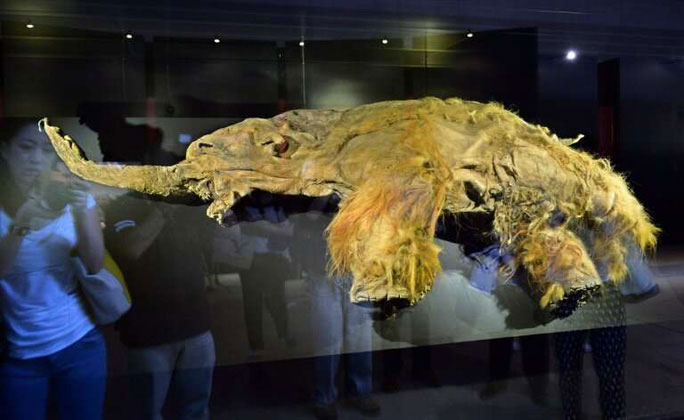New DNA evidence reveals that the famous woolly mammoth species survived in Canada until 5,000 years ago, long after it was believed to have gone extinct worldwide several millennia earlier.
This finding comes from a study led by McMaster University (Canada), which analyzed DNA extracted from sediment samples taken from the Klondike region in Yukon, Canada.
This DNA treasure has been preserved for 30,000 years, detailing the existence of ancient fauna and flora in the area. Researchers used it to reassess previous predictions about the extinction of mammoths and many Ice Age animals, which were thought to have completely disappeared from the Earth nearly 10,000 to 11,000 years ago.

“Natural “mummy” of a small woolly mammoth displayed in Yokohama (Japan) a few years ago – (Photo: Phys.org)
According to Gizmodo, the “youngest” DNA samples of the woolly mammoth (also known as the curly-haired mammoth or tundra mammoth) and North American horse indicate that both species were still alive as recently as 5,000 years ago, during the mid-Holocene.
In contrast, other large Ice Age animals truly disappeared between 11,000 and 14,000 years ago, as the Earth’s climate became unstable toward the end of the Ice Age.
As reported by Daily Mail, DNA evidence also suggests that the extinction of ancient megafauna was not solely due to human hunting. By 5,000 years ago, significant environmental changes had also contributed to the disappearance of these creatures.
Another intriguing discovery from the study, according to Dr. Ross MacPhee from the American Museum of Natural History, is that the North American horse has not actually gone extinct. Ancient DNA shows that it is directly related to a modern horse species called Equus caballus.
“The amount of genetic data in the permafrost is quite substantial and truly allows for an unprecedented reconstruction of the ecosystem scale and evolutionary processes compared to other methods used so far,” concluded Dr. Tyler Murchie from McMaster University’s Ancient DNA Centre.


















































